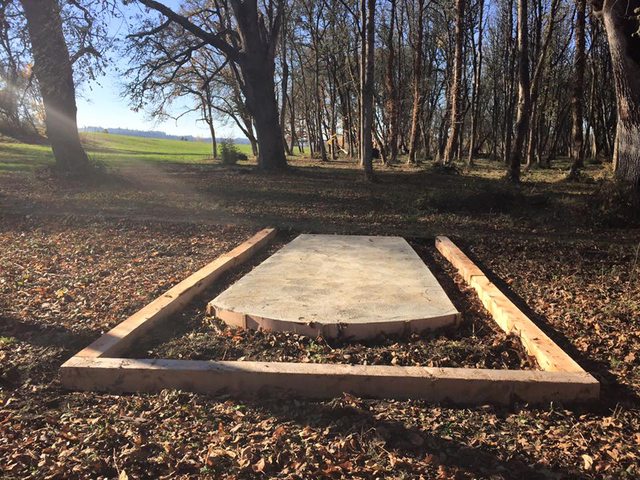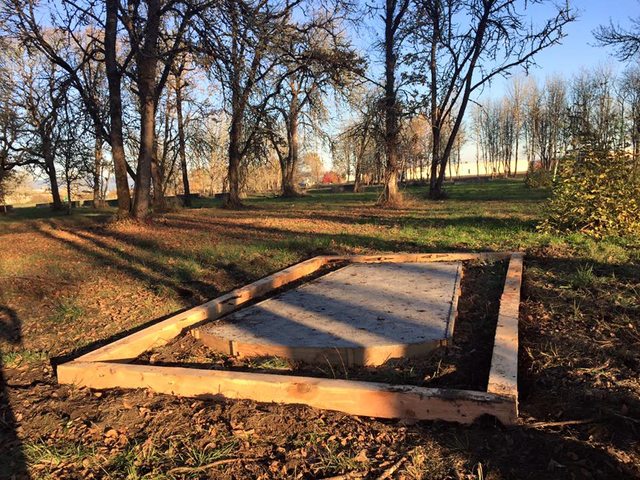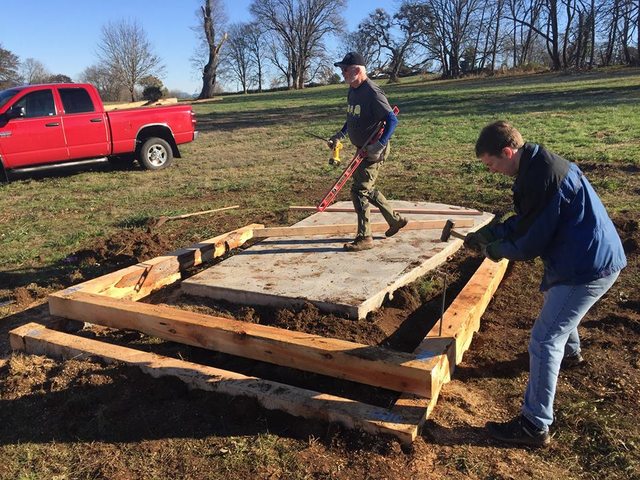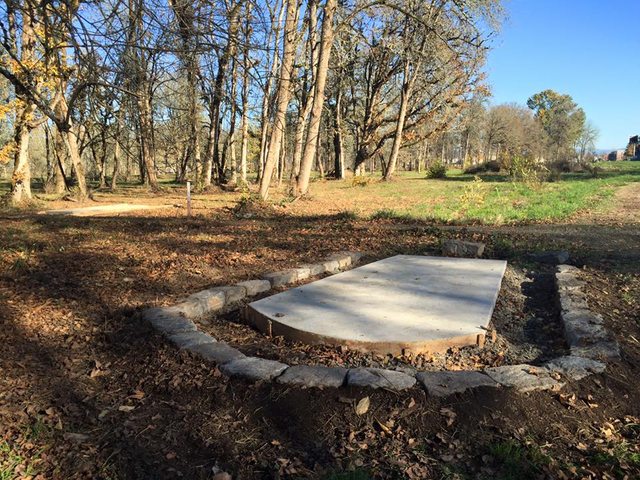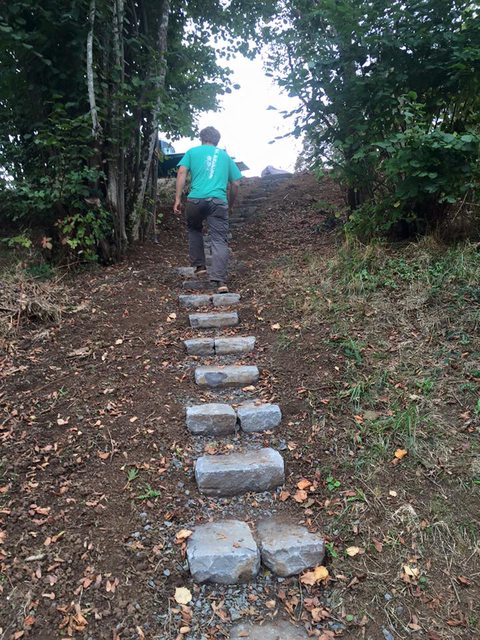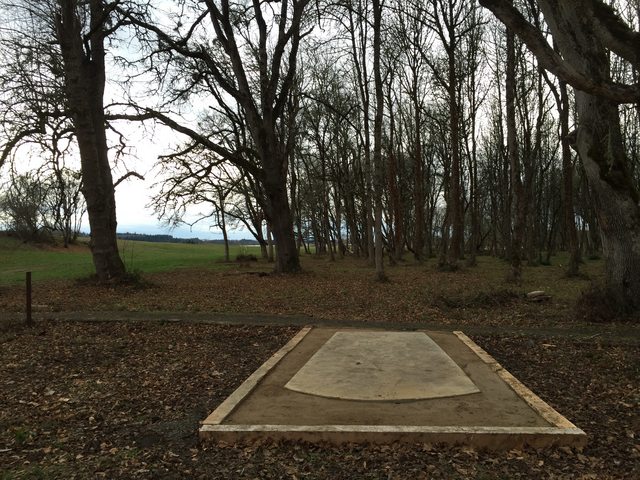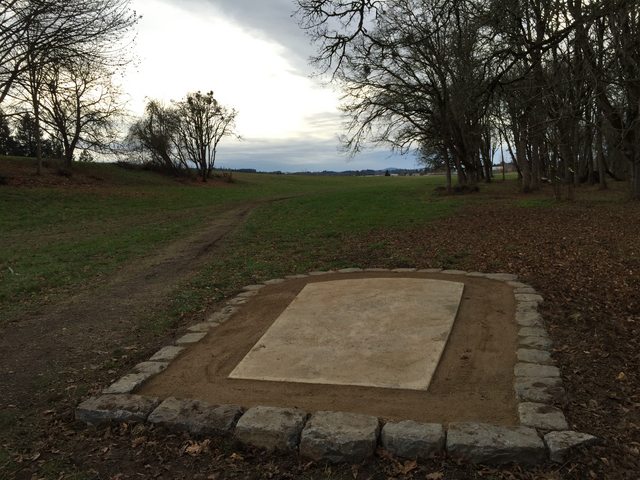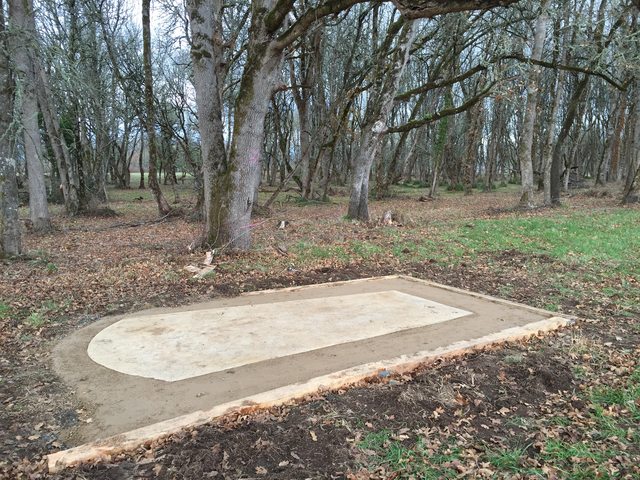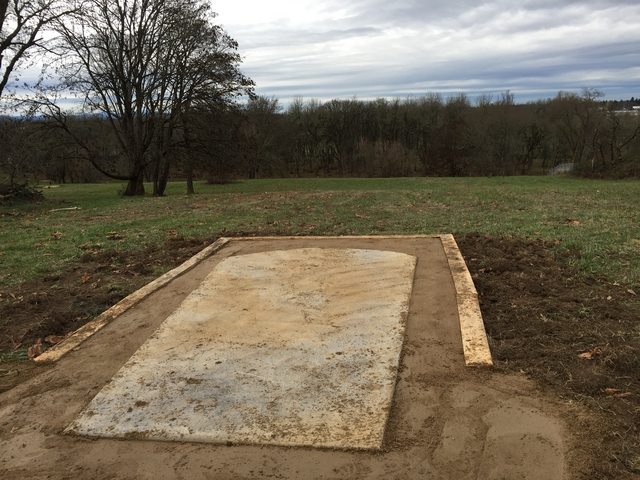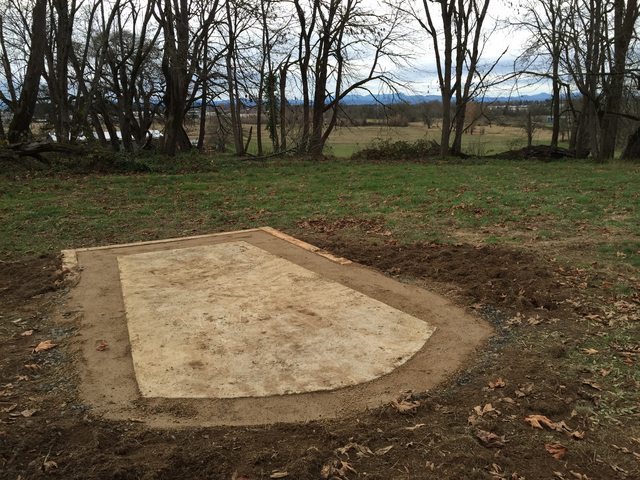Royal Hill
Eagle Member
Of the ones I see on this thread, I like the idea of the stardoggy posted ones the best. Even those same concepts but with a larger "surround" land area.
so, here's a concept - the tee itself is a solid surface. Poured, not going to change. Good stuff. check. The raising of the "surround" above the native elevation is to be done with a border enclosing material (wood, rocks, pavers, blocks, old tires, old telephone poles, etc) Good. Check.
Now... whats in between is the thing.
Soft fill - will fluff out (sand, soft dirt, pea gravel, any gravel really even if initially compacted, bark chips, shreds, ground up tires, old sweatshirts)
Semi hard materials - IF it is softER than the concrete tee, it will also wear. Water retention, cupping, ditching, etc. No way around it, it'll happen. Some "crown" or drainage direction-ality will help. Pooling will always lead to potholing. Feet and boots like to dig, dogs like to dig, people like to kick holes 'just because.
But... maybe the timeframe is long enough that "re upping" the semi hard material makes it worth it. Thinking a semi hard "farmers mix" of sand and concrete or whatever, some "soft solid"
Solid surface, but pervious. - better, but getting costlier. Pavers, some of the hex grid materials out there, stepping stones pavers with spacing for whatever in between infill or vegetation... Those cement pavers that look like x's that people use to build creek crossings...
Intact surface that is different than but not for teeing use - artifical carpet, fake grass. Would keep mud and infill off tee. Players are not teeing off it, so less abuse.
If I had to pick a really good best recommendation - it'd be artificial grange grass covering the surround, that is crowned for water runoff. Hey, closest I could see in example would be the swedish Terminalen course hole one at Skeleftea.
so, here's a concept - the tee itself is a solid surface. Poured, not going to change. Good stuff. check. The raising of the "surround" above the native elevation is to be done with a border enclosing material (wood, rocks, pavers, blocks, old tires, old telephone poles, etc) Good. Check.
Now... whats in between is the thing.
Soft fill - will fluff out (sand, soft dirt, pea gravel, any gravel really even if initially compacted, bark chips, shreds, ground up tires, old sweatshirts)
Semi hard materials - IF it is softER than the concrete tee, it will also wear. Water retention, cupping, ditching, etc. No way around it, it'll happen. Some "crown" or drainage direction-ality will help. Pooling will always lead to potholing. Feet and boots like to dig, dogs like to dig, people like to kick holes 'just because.
But... maybe the timeframe is long enough that "re upping" the semi hard material makes it worth it. Thinking a semi hard "farmers mix" of sand and concrete or whatever, some "soft solid"
Solid surface, but pervious. - better, but getting costlier. Pavers, some of the hex grid materials out there, stepping stones pavers with spacing for whatever in between infill or vegetation... Those cement pavers that look like x's that people use to build creek crossings...
Intact surface that is different than but not for teeing use - artifical carpet, fake grass. Would keep mud and infill off tee. Players are not teeing off it, so less abuse.
If I had to pick a really good best recommendation - it'd be artificial grange grass covering the surround, that is crowned for water runoff. Hey, closest I could see in example would be the swedish Terminalen course hole one at Skeleftea.
